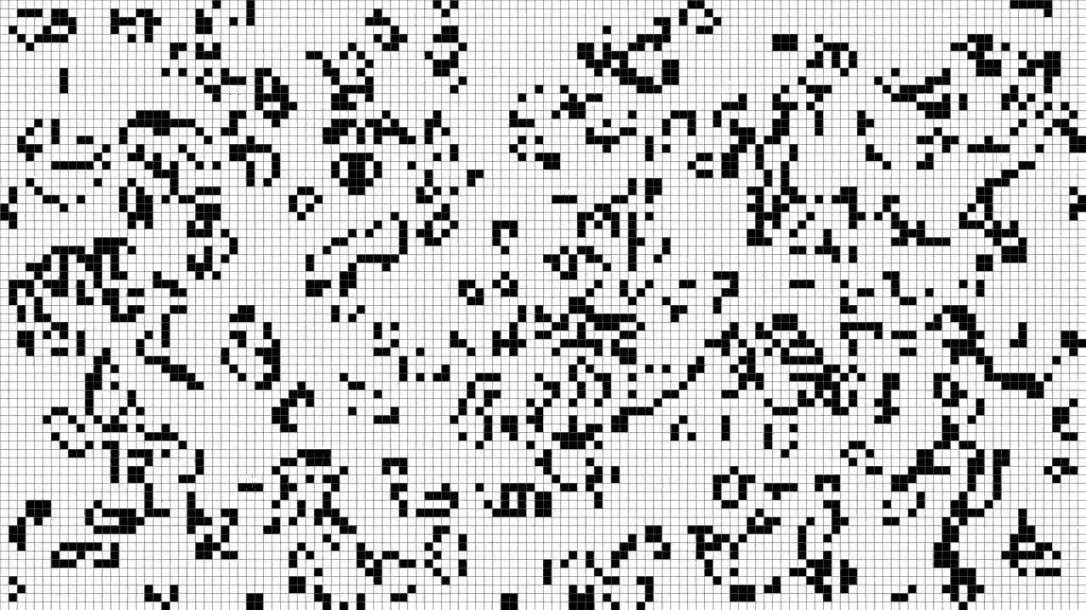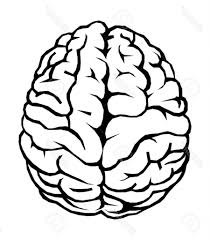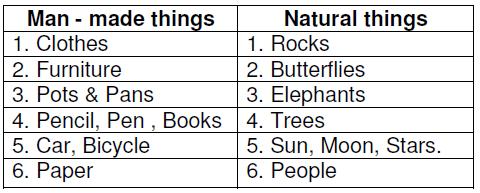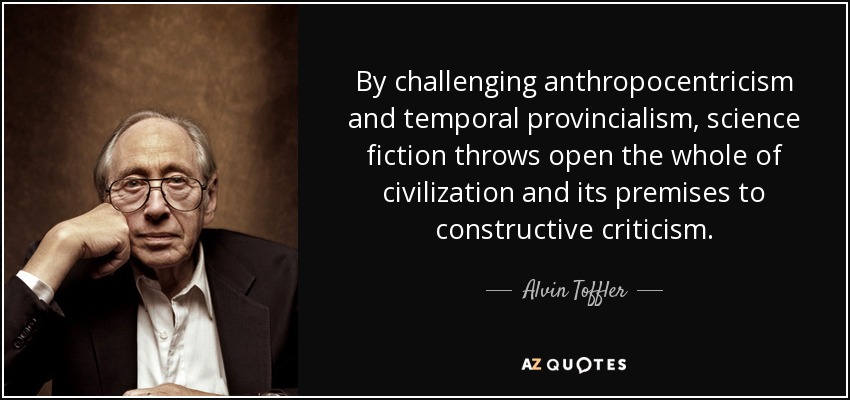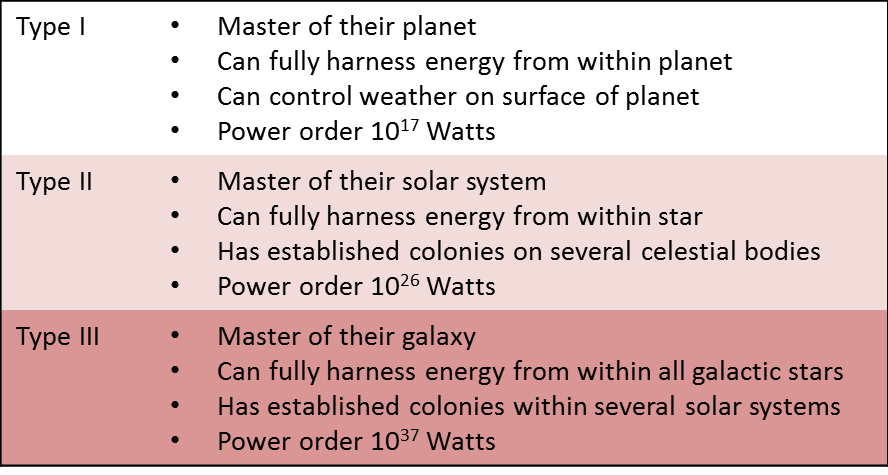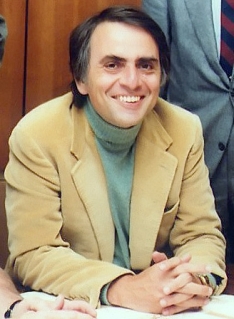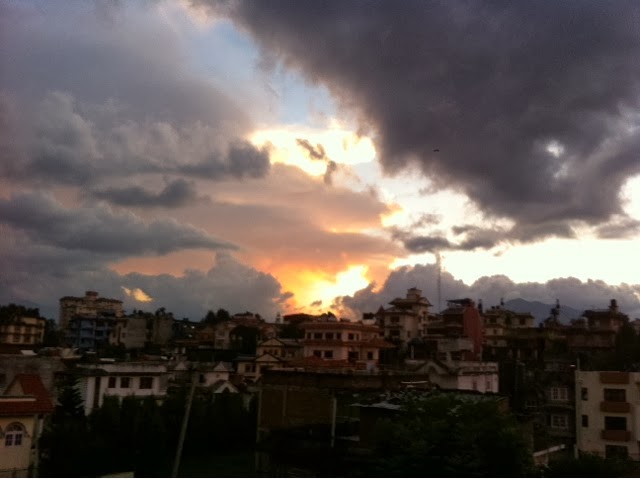Why am I doing this?
(You can skip to the next section if you want to bypass my opinionated rant in defense of the scientific method)
Now this word “consciousness” has been used so many times by so many Tom, Dicks and Harrys around the world, that anyone who watches a 20-minute Sadhguru or Deepak Chopra (Deepu) video online will think that they are now experts on the supposedly “mystical” field of spooky “consciousness” that even “science” (whatever their understanding of it is) knows so little about and thus the scriptures (and their books) will now come to the rescue by uncovering the mysteries of human consciousness through – wait for it – speculations!
Well, speculation is a major part of the scientific process as well, no doubt, but to assume that speculation single-handedly will solve the consciousness problem (without even a single drop of empiricism/critical thinking/experimentation/scientific consensus/data processing), is wholesome ignorance. And what do you mean by “even science cannot understand it properly”? Is science a dude who is confused about something? No man, science is just a tool. When you utter such ill-informed turd-speech it sounds like you’re saying “even hammer cannot nail properly, it bashed my finger instead”. The problem is not in the hammer – but your clumsiness. Likewise, the problem is not in science because there are some gaps in Human knowledge – but instead in inherent and oftentimes unavoidable human biases and assumptions which form the major part of the limitations of what we call the scientific process/method. We need to be clear on this basic fact. Science is just a tool – but the best we have till now to uncover facts about reality. Also it’s not bad that scientific facts keep updating, it’s good to update something, and it’s bad – always – to not update information.
From the above few paragraphs you must have figured out that I’m not a big fan of Jaggi Basudev nor the notorious Deepu. They are highly intelligent, charismatic, benign-looking, charming brown guys who talk about supposedly “eastern” and “mystical stuff” that no one understands. Well congratulations – even they don’t fully understand what they are talking about. If someone does understand what they are talking about then there’s no need to talk in circles and riddles and poetry and what not. You also don’t have to add jargon such as “quantum” or “engineering” to your claims to make you sound credible. There’s only one way to actually become credible – by being intellectually honest and to not talk about something you haven’t understood. And why not be straight-forward while explaining concepts?
For example, if the question is “how heavy is this watermelon?” then the answer should be “it’s X kgs/Lbs” and definitely not “Look, if we assume that this potato is a certain weight and we are to reflect on it’s quantum superfluence, then we can say that it is X as well as Y Kgs/Lbs.” Well, you technically have the right to say that but good luck trying to make sense to any reasonable human being. You do have the right to be ignorant and stupid, but why be ignorant and stupid when you have options to not be? What I’m talking about is this idea called the “First Principles” or in other words “Foundational Reasoning”. What this fancy philosophical word implies is that basics can be explained in simple terms to understand the premise about a certain knowledge. Because if our initial premise is wrong then any argument derived from such a start is not worth examining. So it’s vital in philosophy to get our premise right – and that is where I do not agree with men like these – their very foundations are shaky. They usually argue from an erroneous premise, that nothing esoteric they say ever makes sense unless it’s something about practical life advice or general human wisdom (which even an uneducated old lady in a village might tell you from experience). This is why people like Jaggi and Deepu are never straightforward and have no choice but to talk in riddles and are also compelled to use unnecessary jargon. Should you listen to these people? Entirely your choice. But should these people be trusted when they challenge a scientific principle? Perhaps not, because clarity and precision is vital to the scientific method.
Having a beard, the title of a ‘guru’ or even a medical degree doesn’t automatically make us experts on every “sciency” subject out there. In that sense, even I am not an expert on consciousness. For actual science, you need to go speak to a proper Neuroscientist or read (and properly understand) their elaborate scientific work. What I am trying to do through this article is to reiterate some ground-level facts that are well-established in the field of Neuroscience when it comes to the ever-so-sexy topic of “consciousness”. I’ll be using simple English and simple language because that’s all we need to discuss the basics of any established scientific concept. And below, I’m going to talk about the basics starting from these most talked-about topics when it comes to consciousness: limitations of science, consciousness, perception, identity, death and afterlife. Because I believe that everyone should understand something for what it is and not what they want it to be. But again this article will still not be accurate scientific information (this is not how science works, this is just communication of scientific information to the public). For actual science you would have to train yourself to be able to read and interpret complex scientific information and concepts through scientific papers published in peer-reviewed journals. Doing science is hard, talking shit about science is easy – you just have to use the psychological defense called denial to justify your psychological errors in reasoning known as biases.
Limitations of science
(This is where the real thing begins)
Science cannot figure out everything. This is something that everybody knows, but do they really understand what they think they know? Let me establish something first – there is no western nor eastern science. There is just science. We either have outdated science or updated science. Most of the time updated science with latest information is what scientists or practitioners of evidence-based medicine/tech look for and what progresses the field of science and technology. With no updates, that knowledge is likely to get stagnant and redundant. For example, Ayurveda used to be an actual science during the times of the Maurya Empire in India, but then no one ever updated the practice as time went by (they still believe there are three humors that cause diseases, even in a post-germ theory era), so this makes Ayurveda an outdated science. Other examples of outdated science – bloodletting, leech therapy, astrology, alchemy etc (which were once thought to be scientific until newer evidence came about).
What is science? It’s merely a tool like a hammer as I’ve mentioned above. It’s a tool used by Homo sapiens for observation and documentation of their surroundings. Science, as erroneously assumed, is not even a body of knowledge. Bodies of knowledge can be based on scientific data following people’s observations. People’s observation of scientific data can and have been wrong. This error could arise due to lack of appropriate technology at a particular time or just errors borne out of human clumsiness or mal-intent. When the appropriate technology is available, or when new techniques to reduce errors are developed, new data can be better interpreted to build upon the old body of knowledge. This is how science is self-correctional and thus a continuous process. Unless you’re of some alien species who have discovered another tool better than science, you’re compelled to face the limitations of science. Like it or not, science is till now the best way of acquiring information on anything, and it’s supposed to keep updating. That’s how it improves. What matters for our discussion is scientific evidence in the present. If you think you’ve found something better than the scientific method to uncover the truth about the universe, then you should show us how that works – you’d be doing everyone and humanity a huge favor. But note the word – “show”, don’t just tell.
Consciousness
To be very honest, we (humans) don’t know how to describe it in one word and to quantify it objectively, but we do know for a fact that what we call consciousness definitely arises from our brain. Unlike Rene Descartes’ dualism, which used to be widely accepted until about 70 years ago, we now understand that without the brain there will be no conscious experience in animals (including humans) – because the high level of powerful correlation is very obvious. And every time we conduct experiments to see if conscious experience exists outside of the brain, we will fail, because the brain seems to be the limit. Now before you pat yourselves on your shoulders for “defeating science”, we do know quite a lot about consciousness though. People hold the assumption that scientists try to solve the problems of consciousness through just high-school physics, chemistry and biology concepts (although the basics do require them) and are unaware that a monstrously vast field called neuroscience exists as well and it uses the same simple scientific principles used in high-school science classes. And why not? It works.
Consciousness we know is not at all a single entity. We understand that it is borne out of a process inside the brain. For us to be consciously aware, we need to have all those processes working together. We could also say that consciousness itself is a process, but that would be incomplete and sometimes misleading. To understand it simply, I have to use the analogy of vision. If you ask me what vision is, I’ll give you a similar answer: we don’t know how to describe it in one sentence, but we do know that it’s something borne out of a process involving our eyes and our brain. Light (photons) will strike the retina (which comprises of nerve cells) and evoke electrical signals inside the nerves that lead into various regions of the brain. The processing neurons (nerve cells) inside the brain (mostly in the backside of the brain known as occipital cortex) will process the information received through the retina and interpret it as vision. So honestly, in crude terms, what we know as vision is just an illusion. It’s our brain interpreting certain wavelengths in the electromagnetic spectrum as “something significant” which we call vision. In reality there are just photons and wavelengths reflecting off surfaces, but we see them as colorful information – an illusion, albeit a practically important one because it helps us navigate our way through physical space.
Likewise, for consciousness to arise, it involves a complex interplay of neural and environmental processes (External stimuli, reticular activation area, cerebral cortex, sensory nerve tracts relaying information, complex group of nerve cells in various regions of the brain, nerve cell metabolism and molecular interactions, neurotransmitters, synapses etc). These concepts are sadly too broad to be discussed in detail here, so perhaps another day and another article. Awareness of the self (including sentience), and awareness of our surroundings are some facets of the broader concept of consciousness. We feel that we are aware and sentient, but we cannot quantify it as in we cannot tell exactly how much aware or sentient we are. We can, however, observe and determine the basic fact – whether we are conscious or not. All we need to do is to kill the brain completely (like in brain death) and we will notice that the person is now not aware nor conscious. But mere observation can be misleading, so let’s use technology to aid our observations and give us more accurate data. We could map brain waves (Electroencephalography or EEG) for this purpose. We can see patterned brain waves during awareness as well as during sleep. Contrary to popular belief, sleep is not a state of unconsciousness, but instead that of low awareness. We can still see specific brain activities in our brains while we are sleeping. But when blood supply to our brain is completely stopped (massive stroke) and our brain completely dies (even if our heart and lungs may still be working through mechanical assistance) then we notice that brain waves (except for expected artifacts) are now absent. If you’re not satisfied by EEG then you can also use another technology called a functional MRI (fMRI) to document the same. fMRI is a technique that detects blood flow to the brain and correlates that to brain activity. We could also use a PET scan – which shows metabolic activities inside the brain cells, which can then be correlated to basic brain activity. Whatever methods we use, we’ll always see with a great degree of confidence that when the brain is dead, activities inside it disappear and with them our consciousness and awareness as well. We’ve made this correlation in so many people by now that they sufficiently tell us that for conscious awareness to appear in humans, the brain needs to be functional. If conscious awareness were to exist outside the human brain as dualism or theological schools of thought proposed, then we should at least see some people in a sample of thousands, if not millions, maintaining at least some awareness when the brain is completely and irreversibly dead.
This much is enough to establish the fact that consciousness cannot exist outside the human brain. If you think it does, then you’ll have to objectively show a completely brain dead person being at least minimally aware. All we need to establish this fact is foundational reasoning/first principles coupled with available evidence. We know with great certainty that the brain is the source of conscious awareness. This effectively makes the dualist argument void.
Perception
How do we perceive something? The simplest description of perception could be that it signifies the interpretation of physical information by a certain processing unit, after that information is received by a receiving unit – and in the process becoming aware of that physical information in the processing unit’s own unique way.
I’ll go back to the vision analogy again; when the brain receives the wavelength/photon (light) information via the retina and optical nerves, it tries to tag those bits of information by assigning the illusion of color vision. What are colors anyway? They are merely the brain’s own interpretation of wavelength perception – colors do not exist in the physical world outside a certain nervous system, they are just a way of the brain for it to sort raw electrical data into something orderly. So colors are like the brain’s way of labeling information, sorting things to make it easier for it to detect different wavelengths of light and to change their host’s behavior accordingly. Similarly, our brains interpret different frequencies of molecular vibrations as “sound”. Vibrations occur in the physical world, not sound. Sound is merely perception, a way for the brain to sort the vibrational frequencies into orderly information for the same purpose as for light information.
Likewise conscious perception can be said to be an umbrella phenomenon comprising of thousands of different channels of similar perceptions throughout our body. To understand perception in the simplest way, we definitely have to forget the famous idea of the “five senses”. Simply because there are way more than 5 and even within those famous 5 major organs, there are different sensory receptors that relay a diverse range of sensory information to different areas of the brain. Namely, apart from the famous 5, we have a kind of position sense in our joints called proprioception, we have sensors in muscle tendons and also inside the muscles, we have sensors inside other organs as well, and we have a vast assortment of receptors in the skin for specifically different kinds of sensations (so just saying skin senses touch is a severe understatement). When the entire nervous system works to relay all these different information through billions of nerve tracts and clusters to the brain – it has a task of organizing all those sensations in an orderly way so that it can interpret them accordingly to change its host’s behavior. For example, if we lose our sense of pain in our feet (as in chronic untreated diabetics) then we may unconsciously injure them while moving or by wearing tight shoes – only for them to be gradually infected as we may not be aware enough to take care of the wound. Of course if we lose one sense, there are always others to fill in the gap (like blind people still being able to move about by feeling or hearing), but a relay of many different sensations to the brain and their interpretation at all times (even during sleep) is crucial for us to be consciously aware of our surrounding and ourselves.
Now remember the vision and sound analogy I mentioned above, our brain perceives light as the illusion of ‘vision’ and molecular vibrations as the illusions of ‘sound’ and it similarly does the same for other sensations as well. To talk simply, our perception of the physical environment is broadly just a collection of different illusions that feel like one. By now you may be comparing the brain to a simple model of a computer. There are inputs, there is a central processing unit, and then there is an output. Well, this is not exactly true. What is similar could be the concept that this illusion of perception that we are talking about could be likened to the software in the computer which is projecting onto the monitor through a graphical user interface. When a computer receives any external information, it is converted by some transducers or receivers into binary information (1’s and 0’s), which is then processed by the processor unit and then relayed towards an output source again as slightly modified binary information, which the output device (monitor) translates into pixel form so that the human observers can understand them. Now if we cut the channels from the processor to the monitor on a computer, the human observer cannot make sense of the information (even if it is being processed by the processing unit). This is where I think we can point out how the brain differs from the computer. The brain acts both like the processing unit as well as the human observer! Think about a computer chip that is self-aware – and we have something that is closer to what the brain is. In short, the brain is like a sentient computer chip.
Well, to be honest again, the brain as a whole cannot be always likened to a single processing unit. I did that above to give you the big picture. To be fair, we should say that the brain is a collection of 86 billion-plus processing units. Sometimes it takes just one nerve cell to act as a processing unit, sometimes it takes a group of them – but the established fact is that the brain has multiple processing areas, as well as observing areas. We don’t understand the full process at a detailed molecular and cellular level, but we are getting closer and closer every year because of innovation in newer technologies. To be fair to the brain, it deserves to be misunderstood and hard to study, because out of the 20,000 genes in our body, 14,000 of them are expressed in the central nervous system (brain and spinal cord) – 70% of our genes are involved in the development of the brain and spinal cord and it’s not surprising to me as to why these are the most complex organs in the entire biosphere. So how can anyone versed in neuroscience believe that the mind is not inside the brain?
And since our brain interprets its own perceptions in various different ways (the details to which are still being studied), we know for a basic fact that conscious awareness is an illusion borne out of a process that occurs nowhere else but inside the brain. How do we know this? How does Rene Descartes’ concept of dualism (mind and body being separate) not hold today? Because this basic fact can be demonstrated, repeatedly, in any organized setting, by anyone who understands what the scientific process actually is. This is why I keep repeating the simple rhetoric – you are what your brain makes you and your brain is nothing but the generator of your ‘self’.
Identity
“You are what your brain makes you and your brain is nothing but the generator of your ‘self’”.
Identity is something that is very dear to us all. Each of us have either an assigned identity or a conditioned identity. Our identities could be assigned to us by someone else outside of our own choice (like our names or tribe membership such as nationality at birth), or instead by ourselves later on as we develop our own choices (changing from your birth name or caste or nationality to another). Conditioned identity is something you assume for yourself because it’s always been there since you were born (eg. like a rigid sense of identity associated with religion or nationality). I’m not implying they’re good or bad, they’re just the way things are. For this article however, we are not going to talk about identity assigned by others. But what determines these other identities in life? What makes us who we are? What does identity comprise up of?
Most people must be aware of the nature versus nurture debate. To understand what identity is and how it comes about in the broadest sense, we have to replace the “versus” with “and”. It is nature and nurture, because the two broad factors are not mutually exclusive. By nature, we mean everything that has little to no human control and is purely due to our biological structure and physical environment – such as our genetic composition, the way our nervous system develops inside our mother’s uterus, the diseases or injuries we contract at or right after birth or later in life, our IQs. By nurture, we mean something which has a direct influence of the human society – the society or community we were born into, the kind of parents or guardians we had as children, the kind of friends we hung out with, the kind of relationships we have or had in life and so on. As we grow older, our senses accumulate various information from the environment that are processed by our brains – while the nervous system is still in development. Now our brains may process those information differently for everyone because everyone’s brains are similar yet simultaneously very different. And these complex and intricate interplays between nature and nurture and the constant processing of information by the brains and their resultant correction, regression or improvement of our memories and behaviors will eventually give us a sense of identity at some point in time. This is because our brains stop developing as rapidly after 26 to 30 years of age compared to childhood and we are more likely to adopt a rigid sense of identity after this rough cutoff.
A simpler way to think about this is by imagining a clone of yourself. Let’s say that you cloned yourself and now this clone-baby is born from a borrowed human womb. You try to provide that baby with the exact conditions of your childhood and observe him grow up until it reaches your age when you cloned it. The question is, will the clone of yourself become you? Theoretically, if you exactly mimic each and every condition of your childhood down to the femtoseconds and can control your clone’s biology to be exactly like yours at all times, then perhaps the answer would be a yes. But in practice and in reality, it is always a no. Because in reality there are so many things you can never control and no two events always play in the same expected manner or sequence. Because of the sometimes random and sometimes orderly nature of the universe, nature always errs; and since people are part of nature, they err while nurturing their babies – even if they are their exact clones. Another simple and realistic way to understand this is by looking at identical twins. Identical twins are always a clone of each other – but during the course of their lives, they develop their own tastes and their own sense of identities, personalities and choices. So there you go – nature and nurture with a touch of randomness and sometimes order are responsible for our unique sense of identities and personalities (second law of thermodynamics, i.e. entropy). But the brain is still the limiting factor, you can’t have none of that without a functional brain and nervous system. So even your identities and your unique yet familiar personalities aren’t outside the brain.
Death and afterlife
What happens when you die? That depends on how you define death. Now philosophically, death occurs when you cease to exist in this world that you and the people in it know. Scientifically, in the crudest and most general of ways, death is defined as the point in time when your organic body ceases to function, including the brain, and especially the brain. This is one reason why brain-death (a condition when only the brain is dead but your body is still alive) is so important socially as well as legally. It is the source of your awareness as well as your identity. When this organ ceases to function irreversibly, you cease to exist.
Now people may argue that the “idea” of this person whose brain just died will still linger on despite the brain being dead. This is true to a certain extent though. This person is objectively non-functional and will now never perceive (because the brain doesn’t heal itself once it’s dead). But it seems to the untrained and unaware people as if the subjective part of the dead person still lives – which many people call this person’s ‘soul’, and that is understandable. This “idea” of the person’s identity, which people think transcends his physical body, is possible because of the other brains which are perceiving and have memories of his behavioral characteristics stored in them. So in their brains, their perceptions and assumptions about this now physically dead person still exists. And this very much explains as to why the concept of the “soul” or the mind transcending the physical form, is so ubiquitous across different human cultures separated by time and space. The soul of a person might actually be information about them stored inside other people’s brains. And no two people will have exactly the same ideas about a specific person at any time. For example, my perception of Jaggi Basudev will definitely differ from those who are closer to him (that still doesn’t give validity to his false claims though).
Because people believed that the mind of a person transcended their bodies, the concept of afterlife probably arose. Because when you don’t have cutting edge science and technology to back you up, it was the prevalent commonsense – people must exist outside their bodies. We know today that the concept of afterlife holds no ground in serious scientific academic studies of any kind. We can try to understand the psychology behind why people believe in afterlife (be it reincarnation or the concept of heaven and hell), but it is utter ignorance to even propose the idea that the afterlife (as described in theology and scriptures) is real. Because it’s an untestable claim and needs a significant amount of denial or dismissal of facts to believe in. An untestable claim because it’s based on only speculation and erroneous premises that cannot be demonstrated at all. When we know for certain that the brain is the seat of our awareness, identities and personalities, it doesn’t make sense in the 21st century as to why we have to assume that these facets will live on outside of the dead man’s brain (except if we take into consideration the memories in other brains). We can try to understand people’s ideas of ghosts, spirits and the soul as their old efforts in trying to understand the nature of reality, owing to the limitations in technology during their time. But in the 21st century, assuming a supernatural explanation to confirm one’s belief in the afterlife is nothing more than turning a blind eye to evidence. Maybe it gives them comfort, or maybe that’s their coping mechanism after losing a loved one – but it’s sad to point out that they are absolutely incorrect. It’s as simple as that. We don’t need a middle-ground for this. It’s very well established. You live on after death only as information stored in other people’s brains – but do all those information sum up to become exactly you? Perhaps not.
Wrapping it up
So there’s absolutely no doubt that the brain as a whole is the seat of our conscious awareness, our personalities, our memories, our choices, our actions, our preferences, and our sentience. Is a bacteria sentient? Perhaps not. Are we sentient? Yes we are, and our brains are evidently responsible for that.
Some of us find It really hard to digest the fact that our existence is mostly material. That doesn’t mean that the subjective (immaterial) world does not exist at all – it does. Imagination, metaphysics, fiction, thought-experiments, ideas, aesthetics are real information. I’m just saying that they have a material basis and do not exist independent from the brain. We need the brain to experience and share our subjective sensations with other people who also have similar brains that are capable of interpreting our language. We communicate subjective information through the use of languages in different forms. This is a prime fact that separates us from the lower primates and mammals, we use language as a means to communicate information generated in our individual brains. Even a dog is sentient and self-aware, but their range of interaction with their species and other animals is limited when compared to that of our species. This is because our brains have evolved into a much more complex form that can generate language and also interpret them – allowing us to document our observations and thoughts (even abstract ones) and to communicate them successfully to other members of our species. This is how we can successfully communicate complex information across ages and boundaries to create societies and then civilizations. The language generating brain is what makes us human, allowing us to objectively as well as subjectively assess and interpret data about ourselves and our surroundings.
It might be hard for most people to accept the material nature of our self-awareness because they do not have another species or life form to compare themselves to. The only language-speaking sentient life-forms we know till now are Homo sapiens. So until we find an alien species that are similar to us or instead we build artificial intelligence that trick us into believing that they are self-aware and conscious, some of us may not accept the brain theory of consciousness at all. In short, until we can successfully replicate self-awareness and sentience in machines, we may not fully understand the philosophical question posed by Thomas Nagel – “what is it like to be a bat?” Now this is an interesting and constructive topic we all can discuss about as it is an open question. But how will we even rationally approach it, if we do not understand to accept the basic premise that the brain is the seat of all subjective experience?
Even if we can think about distant stars and visualize far away nebulas and then can come back straight into reality to think about other people, ourselves and our daily chores, we have to understand that the whole phenomenon was being processed inside some of the nerve cells within our brains. The only things science doesn’t understand is where and how exactly these phenomena arise in the brain, but there’s no doubt that it’s somewhere within the brain. This fact may seem unbelievable, counter-intuitive and reductive, but that’s the way it is – we have to accept facts for what they are and not how comfortable we want them to be. And unless we can demonstrate (just talk is not enough) the fact that the mind is independent of the brain, our argument will hold no credibility and is not worth consideration at any time whatsoever.



